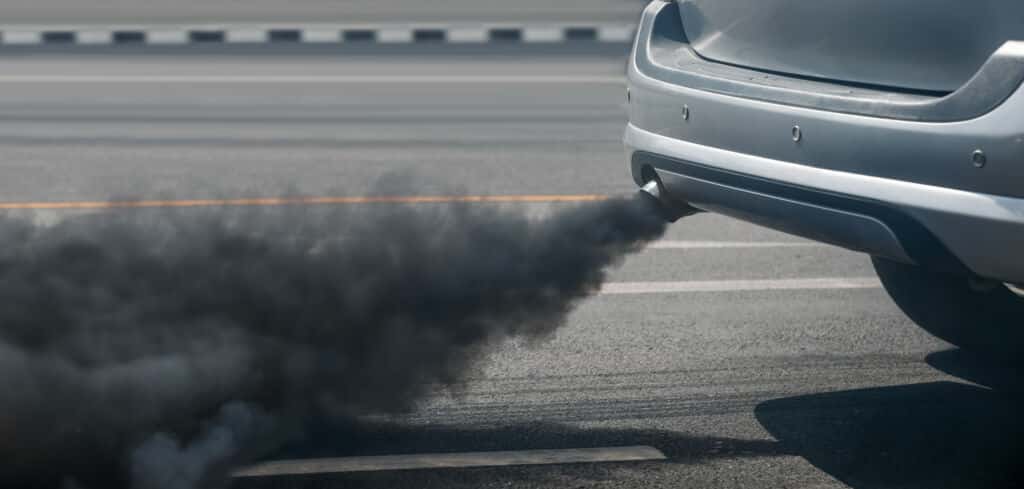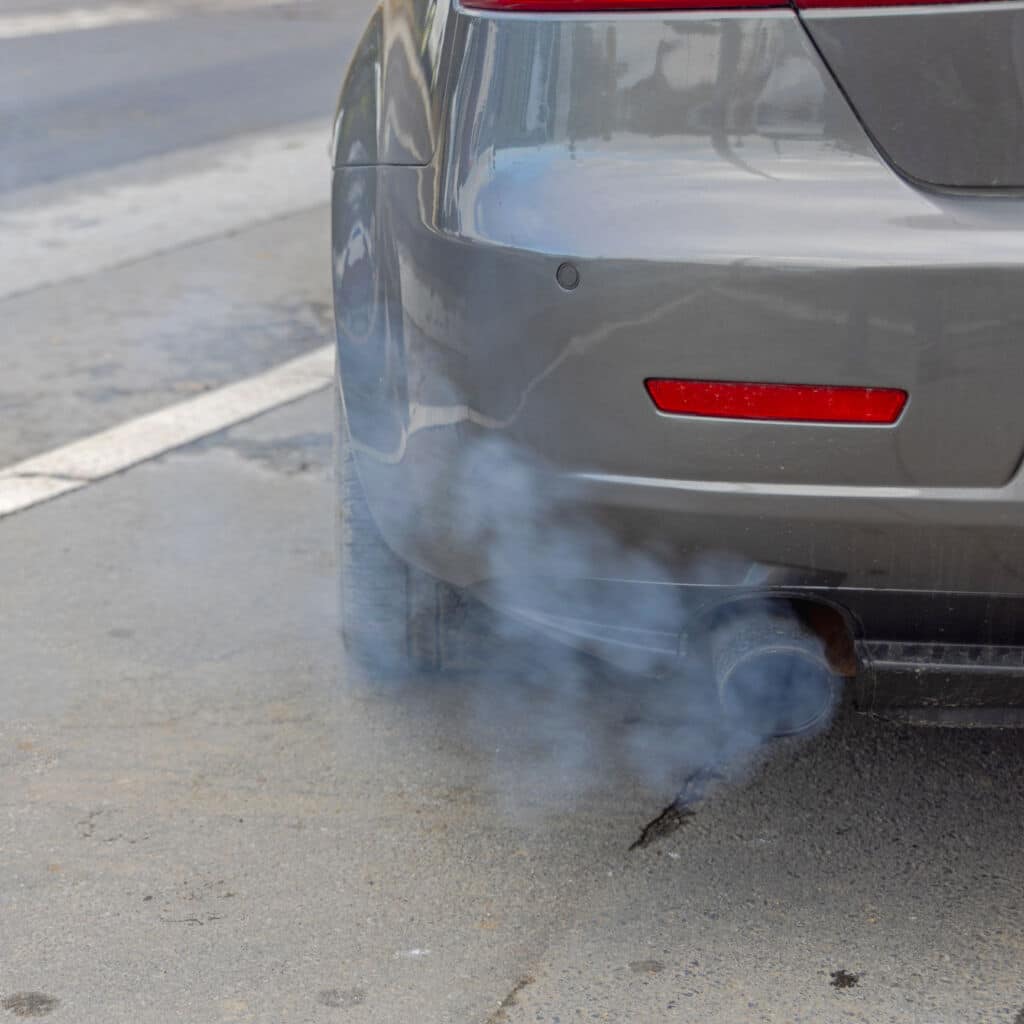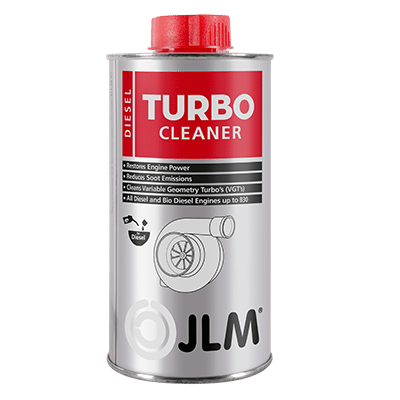Seeing smoke coming from your diesel exhaust can be alarming, but understanding what this means, the difference between smoke colours, and how to resolve it can save you from costly repairs and potential engine failure. Whether it’s white, black, or blue/grey, each smoke colour tells a different story about what’s happening to your vehicle.
In this article, we’ll explore the different types of smoke, their colours, and what they can mean. With this, we’ll help you to diagnose and address any issues that you’re having with your vehicle. Knowing what each type of smoke indicates can be crucial in maintaining your vehicle’s health and performance.
What does white exhaust smoke coming from a diesel engine mean?
White exhaust smoke coming from your diesel engine is often a sign that there’s unburned fuel present with raw diesel coming through the exhaust completely intact. However, there are a few reasons as to why you’re seeing white exhaust smoke:
- Unburned fuel: This happens when the engine isn’t burning fuel efficiently. Possible reasons include faulty fuel injectors, clogged air filter, worn piston rings, or low engine temperature.
- Coolant leak: A blown head gasket, cracked cylinder head, or block can allow coolant to leak into the engine and burn along with the fuel, producing white smoke.
- Cold engine start: During cold starts, the engine may emit white smoke due to incomplete combustion.
If the smoke is thick and long-lasting, it’s likely the burning of coolant that’s behind this.
How to fix white smoke from diesel engine
It’s best to consult a qualified mechanic to accurately diagnose the issue, as white smoke can indicate serious problems, such as needing a head gasket replacement. Addressing these issues promptly can prevent further damage and reduce repair costs. Head gasket replacement can be avoided if spotted in time.

What does black smoke coming from a diesel engine mean?
Black smoke coming out of a diesel engine exhaust signifies trouble. It’s a telltale sign of incomplete combustion, where the diesel fuel isn’t burning properly. This can be caused by several factors:
- Imbalanced fuel-to-air ratio: Diesel engines rely on a precise mix of air and fuel for optimal combustion. If there’s too much fuel relative to air (rich mixture), it leads to black smoke as the engine struggles to burn all the fuel. This can be caused by clogged air filters, faulty injectors, or worn-out components like the turbocharger.
- Fuel injector issues: Worn or malfunctioning injectors can deliver excessive fuel or cause improper spray patterns, disrupting the fuel-air ratio and leading to black smoke.
- Faulty turbo: Turbochargers use exhaust gases to drive a turbine, which then compresses air and pushes it back into the combustion cylinder. A faulty turbo can limit airflow into the cylinder, preventing proper fuel combustion. This results in reduced fuel economy and a soot-rich and black exhaust.
- Blocked DPF filters: With a blocked DPF, the engine struggles to expel exhaust gases, leading to a rich fuel mixture (too much fuel, not enough air). This rich mixture doesn’t burn efficiently, resulting in black smoke.
- EGR valve failure: The EGR valve reduces emissions by returning some exhaust gas to the combustion cylinder, lowering combustion temperatures and NOx emissions. A faulty EGR valve allows too much exhaust gas into the chamber, causing excessive black smoke, reduced fuel economy, and rough idling.
How to fix black smoke from diesel engine
There are several issues that could be causing black smoke to be coming from your diesel engine. For initial attempts at fixing, we recommend trying the following JLM products:
- Fuel injector cleaning:
- Turbo cleaning:
- DPF cleaning:
- Turbo & EGR valve cleaning and DPF regeneration:

What does blue/grey smoke coming from a diesel engine mean?
Blue or grey smoke coming from your diesel engine usually indicates that the engine is burning oil. This can be due to several reasons:
- Worn piston rings: Worn piston rings are the most common culprit. Their function is to seal the combustion chamber, preventing oil from leaking into the cylinder. Worn rings fail to do this effectively.
- Valve seal issues: Worn or damaged valve seals can also allow oil to seep into the cylinder and burn.
- Turbocharger problems: A faulty turbocharger can leak oil into the intake system, leading to oil burning and blue/grey smoke.
- Less likely causes: Other, less frequent causes include excessive engine vacuum caused by a faulty PCV valve or clogged breather system, or even a damaged cylinder head gasket.
It’s also important to note the shade of the smoke. Blue smoke often indicates oil burning during startup due to cold engine oil, whereas grey smoke might suggest more continuous oil burning. The intensity of the smoke can also indicate the severity of the problem.
Aside from the smoke, you should also look out for the following to help you diagnose the problem:
- Low engine oil level requiring frequent top-ups
- Engine performance loss
- Rough idling
How to fix blue/grey smoke from diesel engine
Blue/grey smoke signifies a potential engine issue that shouldn’t be ignored. Addressing the problem promptly can prevent further damage and costly repairs.
We recommend having a qualified mechanic look at your car to diagnose the exact cause of oil burning. They can then recommend the necessary repairs, which might involve replacing piston rings, valve seals, or the turbocharger.
Apart from this, proper engine care can help to prevent grey and blue smoke by removing built-up soot and varnished oil. To achieve this, focus on lowering engine temperatures and improving efficiency. Explore JLM’s range of diesel, oil, and engine products for everything you need to keep your engine in top condition.

Buy from our JLM range to resolve your engine smoke issues
The best approach to engine smoke issues involves a two-pronged strategy: prevention through proper maintenance and prompt action when smoke appears. This will help prevent costly repairs and ensure minimal damage to your vehicle.
At JLM, we offer a wide range of products specifically created to meet all different levels of cleaning needs to fix a range of issues. A list from our range of products has been included below, aimed to cater for the specific issues mentioned within this article:
- Fuel injector cleaning:
- Turbo cleaning:
- DPF cleaning:
- Turbo & EGR valve cleaning and DPF regeneration:
- Engine and oil maintenance:
If you’re struggling to find the best cleaning solution for you and your needs, please contact us or seek professional advice.
Common FAQs about smoke from exhaust
Can I drive my car with white smoke?
While it might be safe to drive a short distance to a mechanic, prolonged driving is not recommended if white smoke is present. This is because white smoke indicates a significant problem such as a blown head gasket.
How much white exhaust smoke is normal?
In general, a small amount of white exhaust smoke during certain conditions can be normal, but significant or persistent white smoke often indicates a problem. Here’s a breakdown of what to expect:
Normal conditions
- Cold weather start-up: It’s common for vehicles to emit a small amount of white smoke or vapour during initial startup in cold weather. This is usually just condensation in the exhaust system that burns off as the engine warms up.
- Short duration: If the white smoke appears only briefly after starting the engine and then disappears as the engine warms up, it’s typically not a concern.
However, persistent or large amounts of white smoke, especially if accompanied by a sweet smell or dropping coolant levels, can indicate serious issues like a coolant leak, head gasket failure, or engine damage that requires immediate attention.

